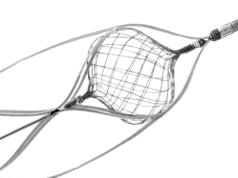The performance of the best perfusion-weighted measure—time-to-maximum—to detect the upper penumbral flow threshold in ischaemic stroke has been deemed “outstanding” by the study investigators. The results, published in Annals of Neurology, led the authors, Olivier Zaro-Weber and colleagues from Max Planck Institute for Neurological Research, Cologne, Germany, to conclude: “Time-to-maximum >5.6 seconds-based penumbra detection is reliable to guide treatment decisions up to 48 hours after stroke onset and might help to expand reperfusion treatment beyond the current time windows.”
From an array of perfusion-weighted imaging parameters, Zaro-Weber and team found that time-to-maximum outperformed the rest in detecting penumbral tissue. Moreover, they report: “The optimal threshold to discriminate penumbra from oligaemia was time-to-maximum >5.6 seconds with a sensitivity and specificity of >80%.”
The authors put forward that, in the clinical setting, the choice of the best perfusion-weighted map and its optimal penumbral flow threshold is still a matter of debate. In light of this, as well as the stroke studies that have shown the clinical benefit of mismatch-based thrombectomy six to 24 hours after stroke onset (such as DEFUSE 3 and DAWN), Zaro-Weber et al set out to prospectively validate perfusion-weighted parameters with full quantitative O-PET (positron-emission tomography), to ensure this imaging procedure is a reliable tool to detect salvageable tissue in acute stroke.
In the current study, 10 patients (group A; six female, four male) with acute and subacute ischaemic stroke underwent perfusion-weighted/diffusion-weighted MRI and consecutive full quantitative O-PET within 48 hours of stroke onset.
“Penumbra as defined by O-PET cerebral blood flow, oxygen extraction fraction, and oxygen metabolism was used to validate a wide range of established perfusion-weighted measures, to optimise penumbral tissue detection,” write the study investigators. Further, they note that the same validation based on penumbra as defined by quantitative O-PET cerebral blood flow was carried out for comparative analyses in 23 patients.
On discussion of the results, Zaro-Weber and colleagues say: “The current study has new important implications for mismatch detection in acute stroke.” While maintaining that the threshold-independent performance of perfusion-weighted time-to-maximum was excellent, with an AUC (area under the curve) of 0.88, they reported that the bigger PET cerebral blood flow group validation (group B) provided evidence that time-to-maximum, time-to-peak and first movement without delay correction are the best perfusion-weighted imaging parameters to detect the upper penumbral flow threshold.
Additionally, based on the study’s findings, the authors advise: “If no selection of an arterial input function is feasible, nondeconvolved time to peak >3.8 seconds is a very good alternative to time-to-maximum.”
While Zaro-Weber and colleagues acknowledge the small patient cohort in the current study, they recognise that it is due to the challenging logistics to perform these measures in acute stroke. However, they emphasise that this is the biggest patient sample of full quantitative O-PET with consecutive perfusion-weighted magnetic resonance in acute stroke.
In conclusion, the study investigators state: “From a clinical point of view, these results are important because the optimal perfusion-weighted maps and penumbra thresholds validated against full quantitative PET up to 48 hours of stroke onset are pivotal to detect penumbral tissue and can help the clinician to decide on revascularisation or other options of treatment in acute stroke beyond the established time windows.”












